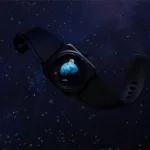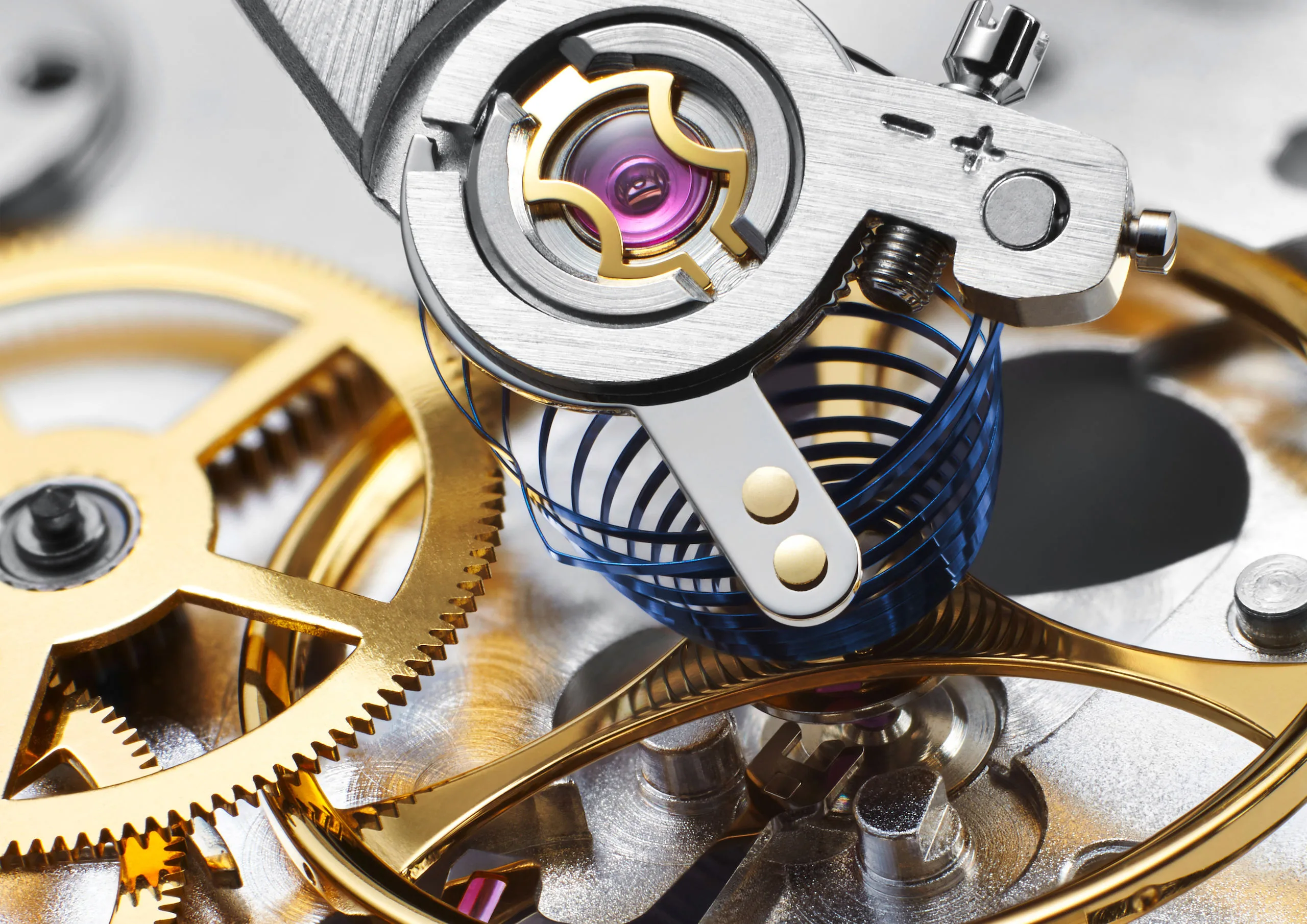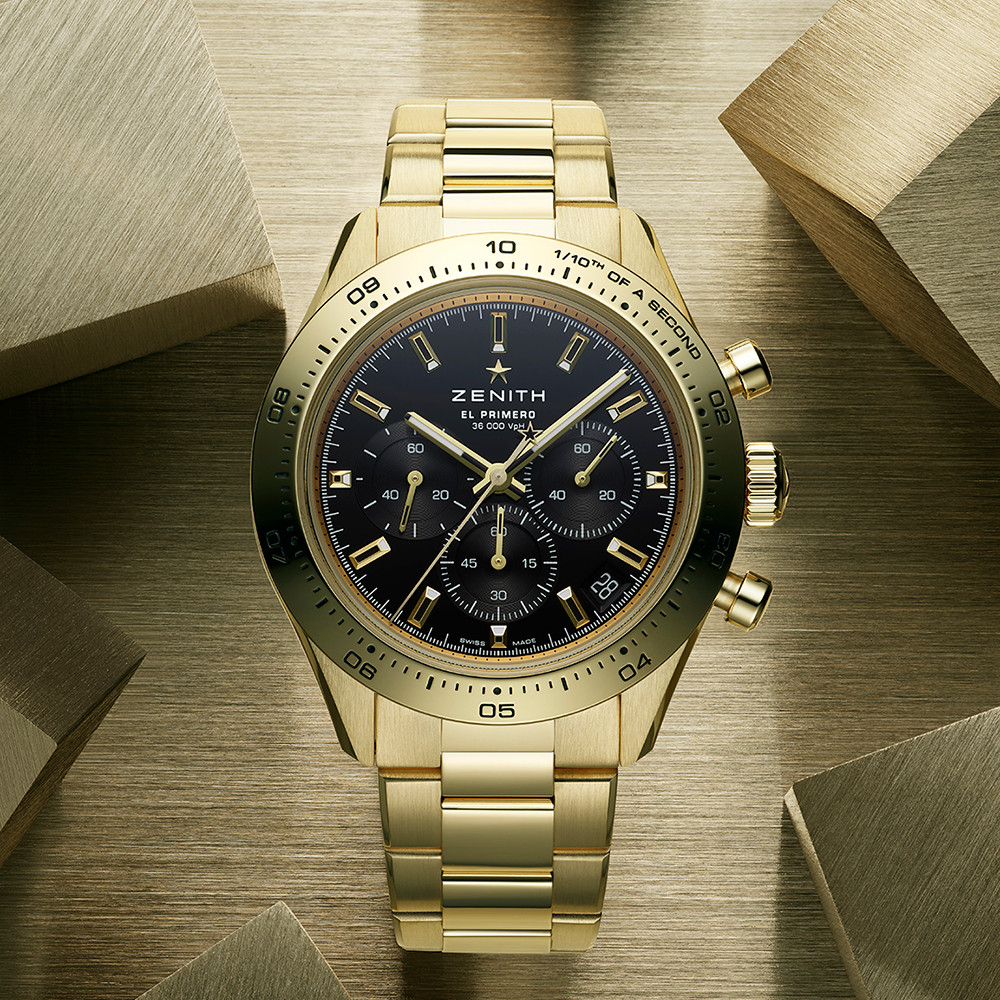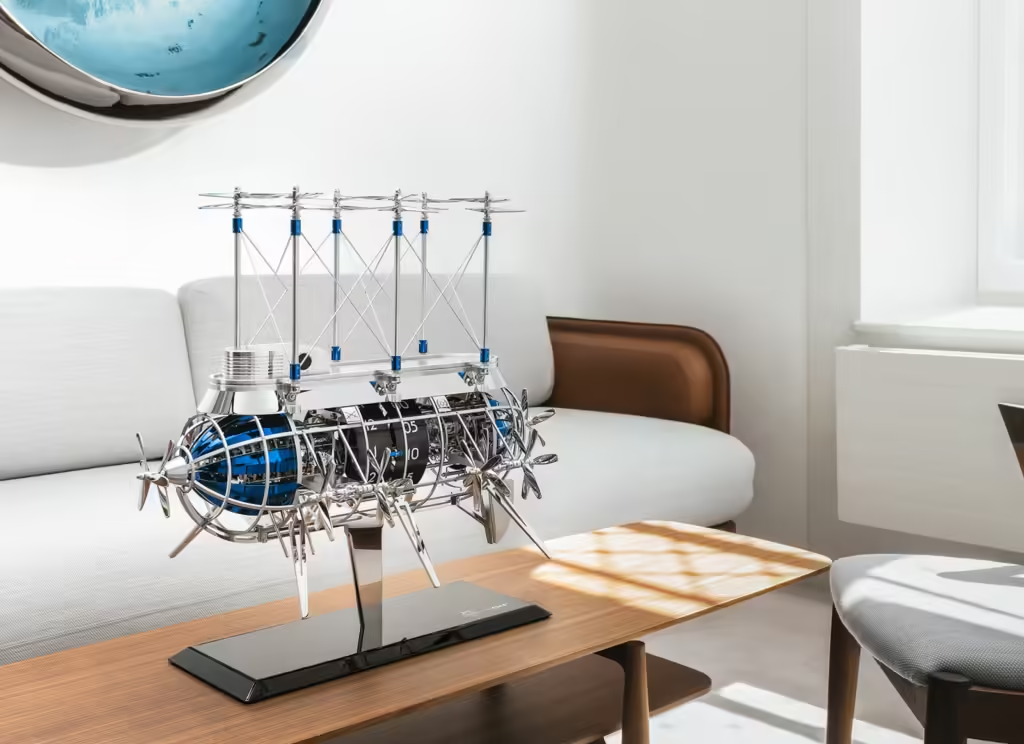
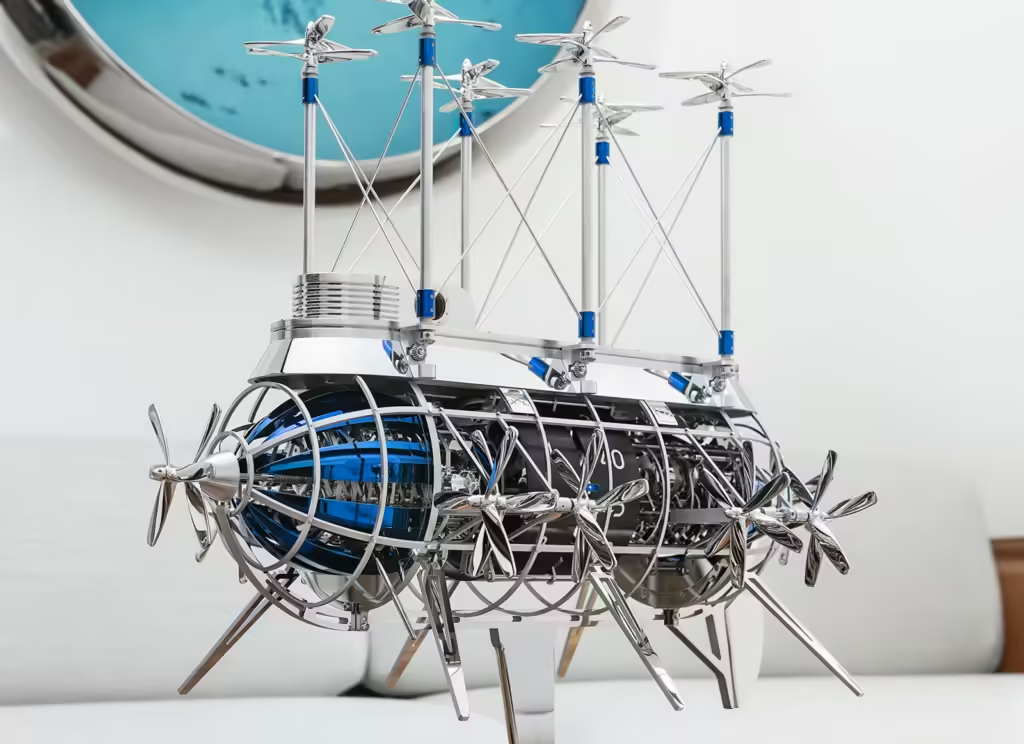
L’Epée 1839 and MB&F, two icons of the horological world, have joined forces to present their most technically ambitious creation to date: the Albatross. This clock, co-created by the two brands, consists of 1,520 components and combines complex mechanical engineering with the artistic vision that both companies are known for. Inspired by Jules Verne’s novel Robur the Conqueror and other fantastical flying machines, the Albatross celebrates human ingenuity and the spirit of adventure.
Design and Inspiration
The Albatross draws inspiration from Jules Verne’s fascination with flight, particularly the airship in Robur the Conqueror. This influence is reflected in the clock’s design, which mimics the form of a futuristic airship. The Albatross functions as both a timepiece and an automaton. It features 16 pairs of propellers that activate every hour, creating a mesmerizing display. These propellers, inspired by aircraft, rotate in pairs to give the illusion of speed and movement, without generating any actual wind.
The clock’s body is made from brass, steel, and aluminum, and it comes in five distinct colors—blue, red, green, champagne, and black. Each color is limited to just eight pieces. The colors are achieved through a cold lacquer technique that enhances the underlying finishes, providing depth and richness that standard treatments cannot match.
Technical Specifications and Mechanisms
The Albatross operates with two independent movements, each with its own winding system. One movement controls the time and striking functions, while the other powers the automaton’s propellers. The clock strikes the hour with a distinctive chime and marks the half-hour with a single chime. The propellers activate in sync with the hour strike, spinning for about seven seconds.
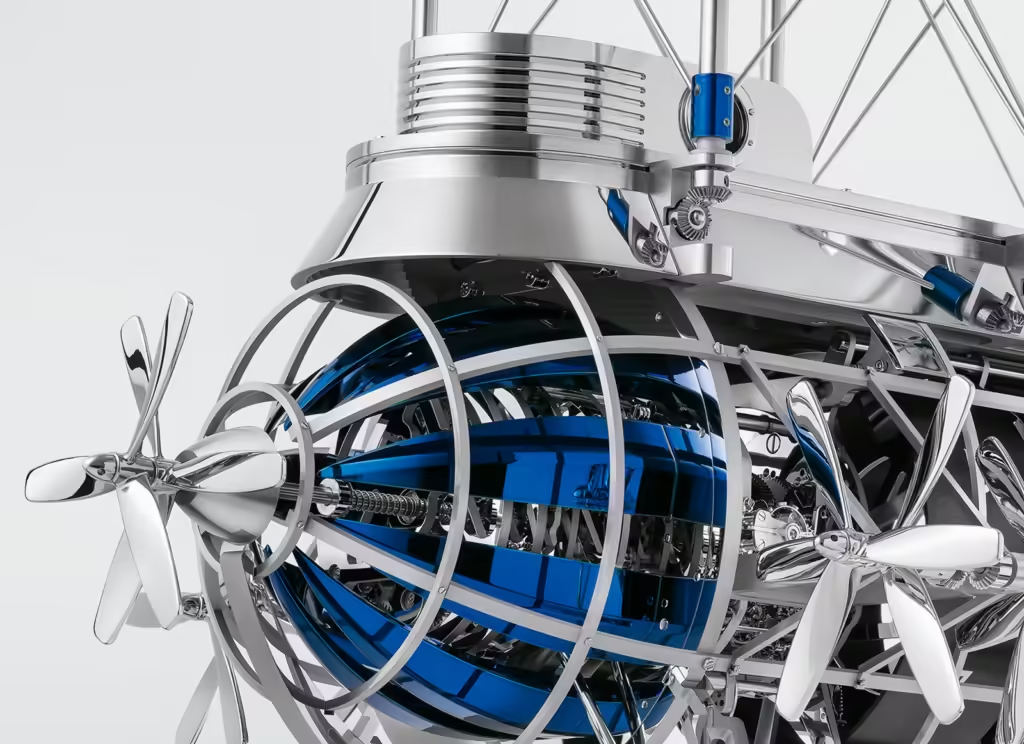
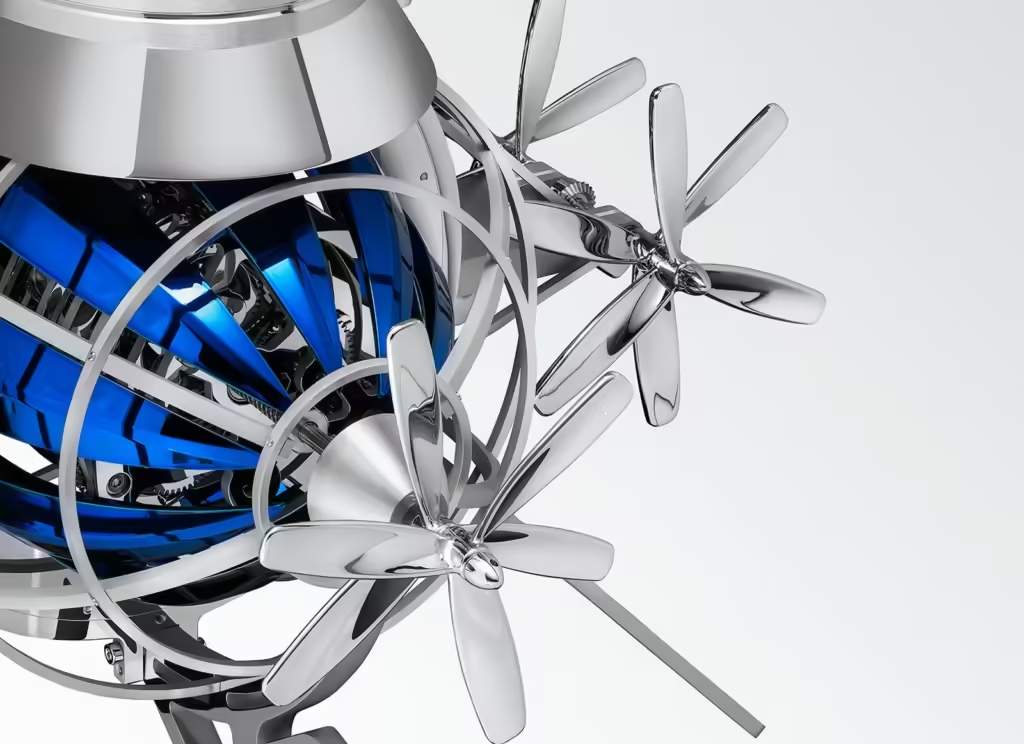
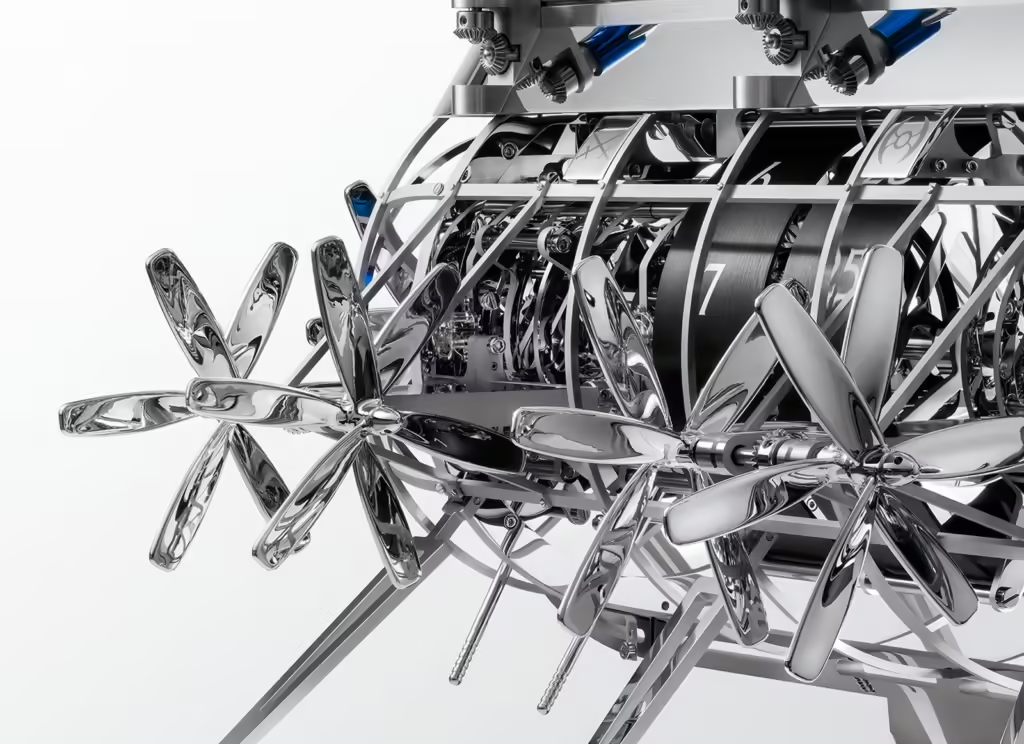
The timekeeping movement offers an 8-day power reserve, allowing for long intervals between windings. Users wind this movement manually via the front propellers: clockwise for the striking function and counterclockwise for timekeeping. The automaton’s propellers are powered by a separate barrel, which provides energy for a full day of operation. Users can activate or deactivate the propellers independently of the chiming function, offering flexibility.
Engineering Challenges and Innovations
The development of the Albatross involved several engineering challenges. Initially, the propellers generated too much force, causing turbulence in the workshop. After multiple adjustments, the team at L’Epée 1839 perfected the mechanism to achieve the desired effect without creating actual lift. This ensures the clock’s stability and safety.
The propellers rotate in opposite directions on each side of the airship, enhancing the illusion of flight. The designers also added a miniature cockpit with a dashboard and ship’s wheel, visible through a porthole. This detail, added late in the design process, has become an integral part of the clock’s charm.
Conclusion
The Albatross transcends traditional clockmaking by blending mechanical complexity with artistic expression. Limited to just eight pieces per color, it offers a rare and exclusive experience for collectors and enthusiasts. This clock embodies the innovative spirit of L’Epée 1839 and MB&F, continuing the legacy of exploration and creativity inspired by Jules Verne. For more information and to explore this unique timepiece further, visit the official MB&F website.

